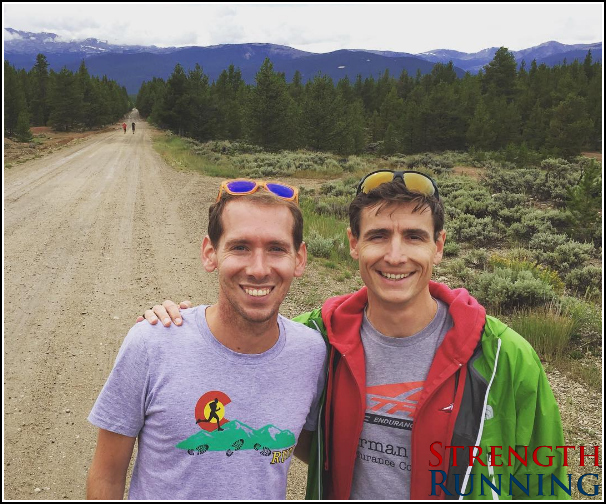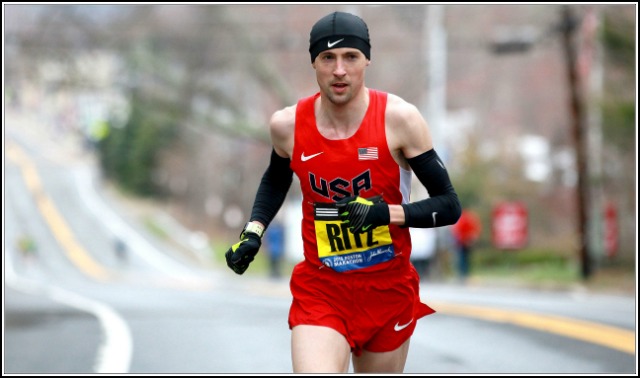If you run and one of your top goals is injury prevention, you are one smart runner (injuries afflict up to 75% of runners every single year!).
Staying healthy is a great indicator of success in the sport of running.
That’s because injury prevention efforts increase your consistency – and I’m quite fond of saying that consistency is the “secret sauce” to accomplishing your goals.
Get injured less frequently and you’ll be able to run more mileage, complete more long runs, and nail more hard workouts.
And in a sport where “more” is often better, your higher workload capacity is going to lead to much faster racing.
But I know it’s not always easy. There’s a lot of really bad injury advice floating around on the interwebs – so I thought I’d make it easy.
Last year, I asked 9 elite athletes to share their injury prevention secrets. There are trail runners, road marathoners, triathletes, obstacle course racers, and everyone in between.
The goal was to outline each athlete’s favorite prevention strategies (so you can learn from them).
Now, anybody can download the free Little Black Book of Prevention & Recovery to peak behind the curtain and discover their most treasured tactics for staying healthy.
Today, I want to highlight two of my favorites from Olympian Dathan Ritzenhein and 4x Leadville Trail 100 winner Ian Sharman.
In each section below, they’ll explain their best injury prevention strategies in their own words.
Ian Sharman: Comprehensive Injury Prevention

Ian has run around 200 ultras and marathons in every type of weather and on all terrains. He’s won around 50 multi-day races, road marathons, trail ultras and adventure races with experience of running in many mountain ranges, including the Himalayas, Andes, Rockies and European Alps.
He also holds the fastest time in a trail 100-mile race in the US (12h44m), the record for the Grand Slam of Ultrarunning (69h49m), has won the USATF 100-mile trail championship twice and is a 4-time winner of the Leadville Trail 100. Ultra Running Magazine has voted him as high as 2nd in its annual Ultra Runner of the Year rankings.
Visit his website or follow him on Instagram.
Enter Ian:
Flexibility in running schedules makes all the difference so adjustments are needed on a regular basis to fit around varying work/life schedules and how a runner’s body responds to training sessions. As a general rule, see a physical therapist or similar expert for any remotely serious injury or when a more minor injury isn’t clearly fading within about a week.
Exercises
I advise a simple routine of dynamic stretches every day, even if you don’t run that day, to improve general strength, flexibility and stability. That includes leg swings, lunges and squats. Even when brushing your teeth balance on one leg to improve core strength and stability.
The combination of these and regular foam rolling really help to reduce potential injuries and therefore improve your running. If there are specific injuries or issues then see a sports’ medicine specialist.
Foam rolling
A large proportion of non-traumatic running injuries stem from muscle tightness leading to restricted biomechanics and alterations in running gait. Therefore, I advise foam rolling (which is more effective than a massage stick because you can utilize more body weight to apply pressure to the muscles) every day.
Imbalances of just a fraction of an inch in how each foot lands can lead to injuries – often the area that hurts isn’t the real problem. Getting those muscle tissues and the fascia loosened up and able to move freely definitely prevents some easily avoidable injuries.
Roll every angle of every muscle in the legs, glutes and hips (basically all the areas that feel tight or sore from running, plus areas that may feel fine but are still getting tighter). A roller that’s hard rather than soft will work more effectively.
Massages
I advise getting a sports massage every 1-4 weeks, depending on the training work-load and history of injuries in the past, for the same reasons as above. Sometimes we might not be thorough enough with the foam roller and it’s better to let an expert have a look.
I’ve lost count of the amount of times I’ve thought my leg muscles were nice and loose, but a masseur still finds knots and tightness – again helping prevent possible injury. Yes, there’s a cost involved, but how much does injury cost in terms of missed races, not to mention your general happiness or physical therapy costs?
Sleep
Sleep is vital, but we often deprioritize it. When we’re asleep our body is healing to benefit from the key adaptations from the training we’ve put it through. It’s probably not realistic to get the optimum number of hours every night (which typically means at least seven hours). Also, straight after a race it’s vital to get more rest than usual. The more quality sleep you can get, the faster your body can heal.
Recovery runs
Every run should have a purpose and that’s generally either a long run, speed, hill work, or a recovery run. Recovery runs should be done at a very slow pace, but still focusing on maintaining good form. This is the speed you’ll likely be going at towards the end of an ultra anyway.
As the name suggests, recovery runs also help your legs recover from harder efforts, flushing out the muscles and increasing blood flow to the muscles that have been broken down on harder or longer runs. This helps to get the required nutrients to the muscles to rebuild and adapt optimally. Recovery runs are really important.
Recovery time after races
There’s no rush to run again after each event, especially a big ultramarathon. All that rushing back into training does is increase the chance of injury.
Take at least a week completely off running, then start walking and hiking. Ultimately the most important thing to remember here is that your body may take different amounts of time to recover from one race to another and that someone else’s recovery time is probably not the same as yours.
Your body will give you clear signals as you restart running after a race and it’s important to realize that feeling bad on a run is a sign to back off rather than step things up.
Dathan Ritzenhein: “Focus on Strength Training”

Dathan Ritzenhein graduated high school with 6 National Championship titles and left the University of Colorado with four All-America titles, a national title at cross country, and the school record in the 10,000m.
As a professional runner, he has competed at the 2008, 2012, and 2016 Olympics and won the US Cross Country Championships three times.
Dathan also held the previous American Record in the 5,000m in 12:56.27 and has a personal best time of 2:07:47 for the marathon and 60:00 for the half marathon. With a history of injuries, Dathan is a great voice for reason when it comes to injury prevention!
Follow him on Twitter or check out his sponsor Generation UCAN.
Enter Dathan:
Injury is the hardest part of being a competitive runner. I am reminded of this each time I look at my 20-year-old Cannondale bike as it sits on the trainer in my basement. It has been a steady companion over the years but it brings back some bad memories!
Injury may be tough but it is also the best opportunity to not only test your willpower, but to improve the things which most runners neglect. Let’s face it, nobody falls in love with cross training, we do it because we love to run and it is the quickest avenue back to running fitness.
Unfortunately, it can also make you even more susceptible to future injury if you bury yourself in aerobic cross training at the expense of increased time devoted to the strength and structure of your body.
After injury, the first inclination of most athletes is to bury themselves in long hours on the bike, in the pool or on some other piece of cardio equipment. While that will keep the weight off and maintain cardiovascular fitness, you lose flexibility, neglect the range of motion specific to running, lose the power required to run fast, and don’t load your skeletal system to maintain bone density.
You are now able to be back running quickly, but a couple weeks down the road get ready for the next injury. Trust me, I know, been there and done that many times!
It’s easy to spend so much time cross training that you’re too tired physically and mentally to spend the time needed to rebuild the body with necessary strength training. Have a plan, just like running. Don’t just go to the gym and decide that day!
Start with having someone help you who has experience with coming back from injury. Whether it is a coach, training partner or therapist, this is important because it is a delicate balance between healing and building strength and fitness. They will be a sounding board because it is easy to let your emotions get the best of you which leads to mistakes.
Plan to spend 3-4 days per week focusing on strength training. You can do some easy cardio training those days too, but use it more as a warmup and cool down. Not only will this be good for your body’s structure but it will give your body the rest it needs to heal. If you do hard aerobic cross training every day, your body never gets the chance to recover and repair. It’s easy to over-train with cross training because it doesn’t beat your body up like running does so it’s easier to go hard every day until you’re fried.
This approach will keep you fresh enough to push hard on the other days and get the most out of hard cardio workouts. Make them count! This is a good balance between rest, strength and maintaining fitness.
What Prevention Tactic Will You Use?
There are many different ways of tackling the complex topic of injury prevention. But both Ian and Dathan have outlined effective, proven strategies for staying healthy.
And they’re in alignment with my coaching advice:
Incorporate these lessons into your training and I know you’ll not only prevent more injuries, but you’ll also just feel better.
Of course, we have a lot more in the full book that you can download for free.
You’ll hear from:
- Amelia Boone
- David Roche
- Kelly O’Mara
- Devon Yanko
- Max King
- Andy Wacker
- Joseph Gray
Everyone who registers for our free injury prevention email course will get the book immediately after registering.
Enjoy!